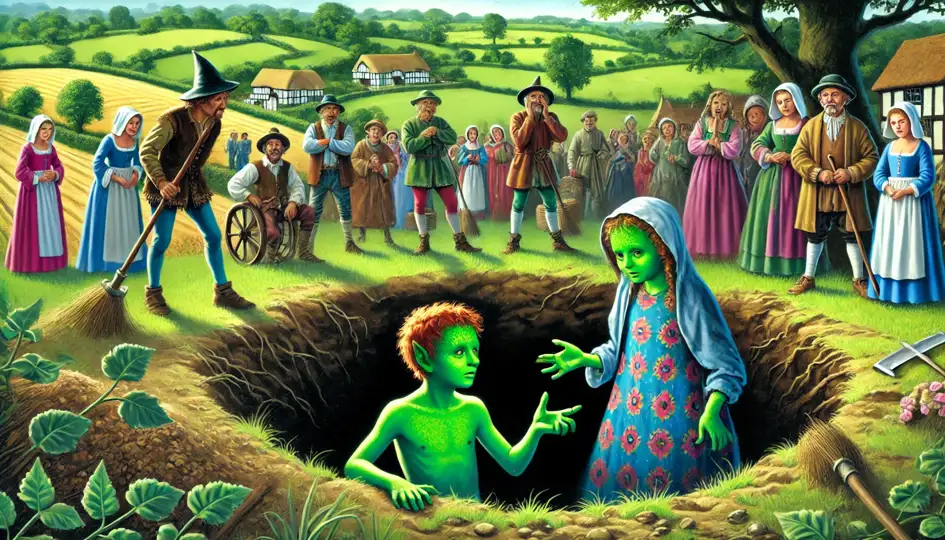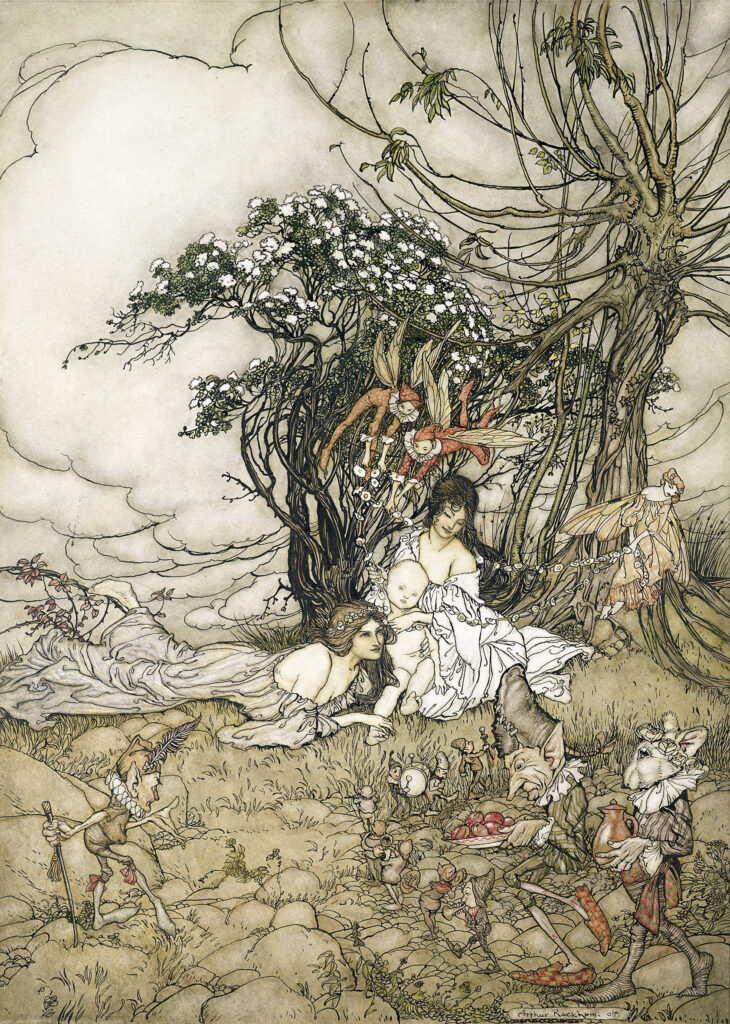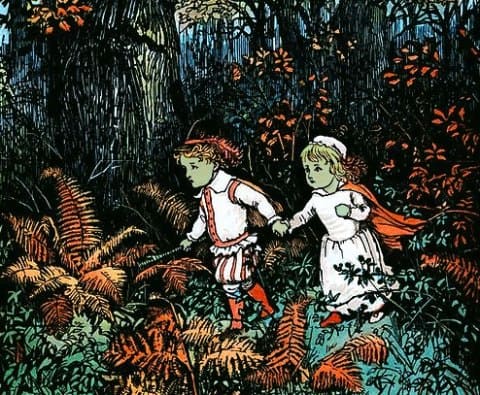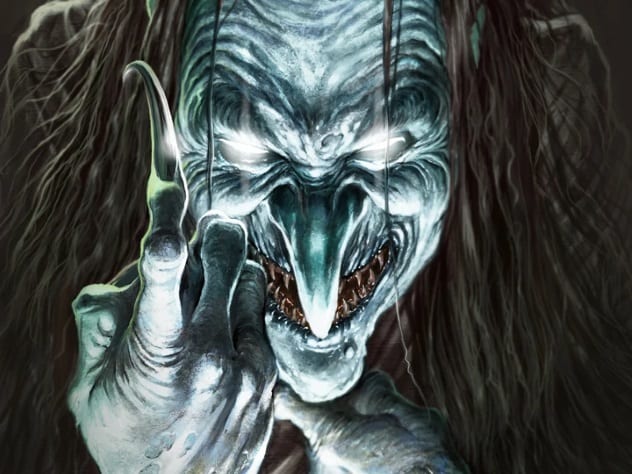Supernatural Stories: 9 Unusual British Folktales That Still Haunt the Isles

Britain is a land steeped in fog, forests, and forgotten legends—its history brimming with eerie whispers of the otherworldly. Long before horror films and modern ghost stories, communities passed down chilling folktales that merged superstition, morality, and local fears. These stories—sometimes terrifying, often strange—blur the lines between myth and memory, superstition and truth. Here are nine of the most unusual and supernatural British folktales, each reflecting a corner of the British Isles’ rich and haunted imagination.
1. The Green Children of Woolpit (Suffolk)
One of the strangest stories in English folklore, the Green Children tale dates back to the 12th century. According to chronicles, two children—brother and sister—were found near Woolpit, Suffolk. Their skin was green, they spoke an unknown language, and they would eat only raw broad beans.
Eventually, the girl learned English and explained they came from a land called St. Martin’s Land, where the sun never shone. Some scholars speculate this was a distorted memory of Flemish refugees, while others believe it’s evidence of a parallel world or even a medieval alien encounter.

2. The Phantom Coach of North Yorkshire
In the desolate moors of Yorkshire, a spectral black coach drawn by headless horses is said to appear near certain crossroads. The coach glows with ghostly light and passes silently, sometimes vanishing before the viewer’s eyes. Often linked to portents of death, sightings of the phantom coach are said to foreshadow tragedy in local families.
Variations of this tale appear across Britain, often associated with the Wild Hunt or old pagan beliefs about the soul’s journey to the afterlife.
3. Tam Lin (Scottish Borders)
Tam Lin is one of Scotland’s most haunting and romantic folktales. A mortal knight kidnapped by the Queen of the Fairies, Tam Lin can only be saved by his lover, Janet, on Halloween night. To reclaim him from the fae, she must hold onto him through terrifying transformations—a lion, a snake, a burning coal—without letting go.
This tale blends chivalric romance, faerie folklore, and feminine bravery, showcasing the mysterious and often sinister nature of the fairy realm in Celtic traditions.
4. The Hairy Hands of Dartmoor (Devon)
Drivers on Dartmoor’s lonely B3212 road have long reported a terrifying phenomenon: ghostly hairy hands suddenly appearing on the wheel, seizing control of the vehicle and forcing it off the road. Accounts date back to the early 20th century, with some motorists swerving violently or crashing for no visible reason.
The origin of the hands is unknown. Some blame ancient curses or vengeful spirits from nearby Bronze Age sites. To this day, locals speak of the road with caution.

5. The Cauld Lad of Hylton (Sunderland)
The Cauld Lad is a mischievous yet sorrowful spirit said to haunt Hylton Castle in Sunderland. Thought to be the ghost of a murdered stable boy, his presence is known by strange noises, disappearing tools, and icy drafts.
If appeased with milk and offerings, the Cauld Lad will help with chores; if ignored, he creates chaos. His legend reflects a blend of domestic ghost stories and changeling myths, hinting at a time when supernatural explanations were sought for everyday misfortunes.
6. The Nuckelavee (Orkney Islands)
One of the most horrifying creatures in Scottish folklore, the Nuckelavee is a skinless sea monster resembling a skeletal horse fused with a human torso. It emerges from the sea to bring disease, drought, and death. The breath of the Nuckelavee was said to wither crops and kill livestock.
Only fresh water can stop its pursuit. This grotesque creature reflects ancient Norse influences blended with Celtic fear of the wild sea and its chaotic forces.
7. The Corpse Candles of Wales (Canwyll Corph)
In Welsh tradition, corpse candles are mysterious floating lights seen at night, often along paths leading to a church or graveyard. They are considered omens of death, following the route a funeral procession will later take.
Witnesses say the candles vary in size depending on whether the deceased will be a child or an adult. These eerie lights are a uniquely Welsh contribution to the folklore of spectral illuminations found across the British Isles.
8. The Black Shuck (East Anglia)
The Black Shuck is a ghostly black dog with glowing red (or green) eyes that haunts the coastline and countryside of East Anglia. Said to be as big as a calf or even a horse, this supernatural hound is an omen of death.
One infamous legend tells of the Shuck bursting into Blythburgh church during a storm in 1577, killing worshippers and leaving scorch marks on the door—known as “the Devil’s fingerprints.” The tale has inspired gothic fiction and echoes Norse myths of spectral hounds.
9. The Fairy Coffins of Arthur’s Seat (Edinburgh)
In 1836, a group of boys exploring Arthur’s Seat, the hill overlooking Edinburgh, discovered 17 miniature coffins hidden in a cave. Each held a tiny, clothed wooden figure. No one knows who made them or why.
Theories range from witchcraft to symbolic burials for sailors lost at sea, to the possibility that they represent victims of infamous murderers Burke and Hare. Whatever their origin, the fairy coffins remain one of the strangest archaeological mysteries in British folklore.

Folktales as Mirrors of Culture
These tales, as strange as they are, aren’t just entertaining ghost stories—they’re mirrors of cultural memory, shaped by centuries of oral tradition. They reveal:
- Moral warnings (beware greed, pride, or venturing into sacred places)
- Explanations for natural phenomena (mist, death, disease)
- Community identity (each tale rooted in specific local landmarks and traditions)
They also reflect deep-seated psychological fears and hopes—of death, the unknown, the afterlife, and the hidden forces that might shape our world.
Conclusion: Echoes from the Fog
From green-skinned children and demon horses to roadside hauntings and corpse-lit nights, Britain’s supernatural folktales are as varied as its landscapes. Whether born of ancient Celtic paganism, Norse mythology, medieval Christian fears, or simply the eerie silence of the countryside, these legends still capture imaginations today.
And while many dismiss them as myth, others wonder: what if there’s a grain of truth behind the tale? After all, in Britain, where the past walks closely beside the present, anything might be waiting beyond the hedgerow or just around the bend in the fog.




